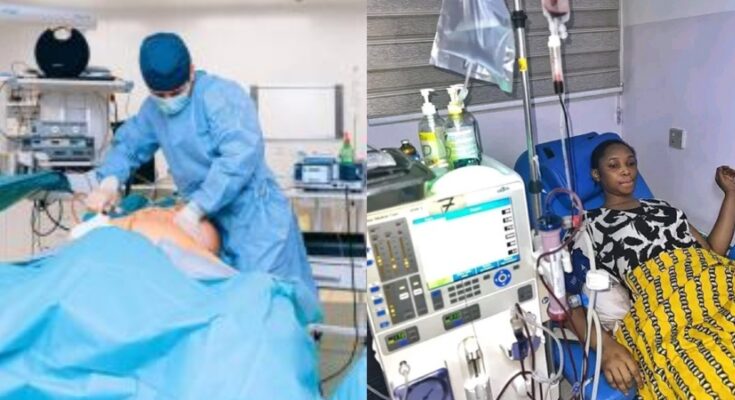Plastic surgery is very common today. Many people get plastic surgery to change how they look. They want to look younger or more beautiful. Or they want to change a part of their body they do not like.
Plastic surgery is not dangerous for most people. But there are always some risks with any surgery. People should learn about the dangers before getting plastic surgery.
There are 10 main dangers to know about plastic surgery. Knowing these risks can help people decide if plastic surgery is right for them. It is important to talk to the doctor about any health concerns. The doctor can help lower the risks.
Most plastic surgery does not cause big problems. But people should understand what could happen. If people are prepared for the dangers, the surgery usually goes well. Here are the ten health risks of plastic surgery:
READ ALSO: Crossdresser, Jay Boogie fights for his life as cosmetic surgery goes wrong
Dangers of Plastic surgery
1. Infection – Anytime the skin is cut or punctured, there is a risk of infection. Antibiotics are commonly prescribed after surgery to prevent infection. Signs of infection include redness, swelling, pain, and fever. Infection can usually be treated with antibiotics but may require additional surgery. These infections can damage organs in the body.
2. Scarring – Incision sites will result in scarring, some more visible than others, depending on the location. Scars may fade over time but will remain permanently. Some people are more prone to thick, raised scars known as keloids.
3. Bleeding – Bleeding is common after any surgical procedure. Usually, it is minimal, but significant bleeding may require a return to the operating room to cauterize blood vessels and stop bleeding.
4. Numbness – It is common to have temporary numbness near surgical sites as nerves may be affected during procedures. This usually resolves over time, but some numbness can be permanent.
5. Unsatisfactory results – Even with the best surgical skills, the end result may not match a patient’s expectations. Multiple revision surgeries may be needed to achieve the desired results.
6. Pain – Mild to moderate pain is normal after surgery. Most pain can be controlled with medication, but some patients may have severe, ongoing pain.
7. Scarring or nerve damage from anaesthesia – Insertion of needles for anaesthesia can cause nerve damage or scarring. Temporary paralysis is possible if nerves are affected.
8. Blood clots – A serious risk is developing blood clots in veins after surgery. Blood clots can travel to the lungs, causing damage. Medications are used to prevent blood clots.
9. Respiratory problems – Anesthesia, like pneumonia, can sometimes lead to breathing difficulties. Having a pre-existing lung disease increases this risk.
10. Allergic reaction – Allergies to anaesthesia or medication given before, during, or after surgery can be life-threatening. Be sure to disclose any drug allergies before surgery.
While plastic surgery has risks, they can be minimized by choosing an experienced, board-certified plastic surgeon and following pre and post-operative instructions carefully.
Understanding the potential dangers allows individuals to make educated decisions about proceeding with plastic surgery. With proper precautions, most people undergo plastic surgery with satisfactory outcomes and manageable side effects.








